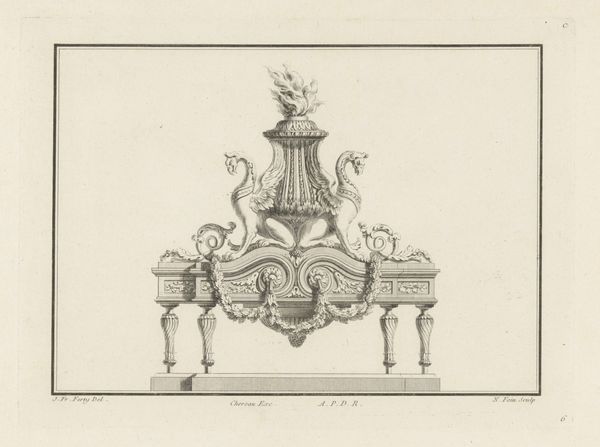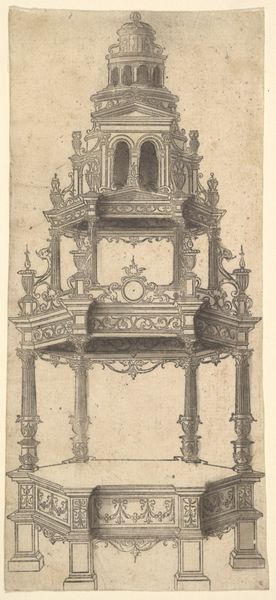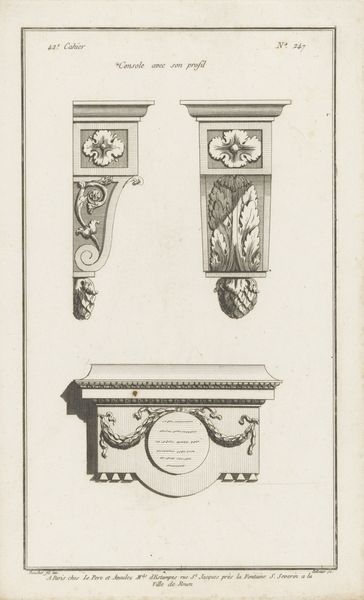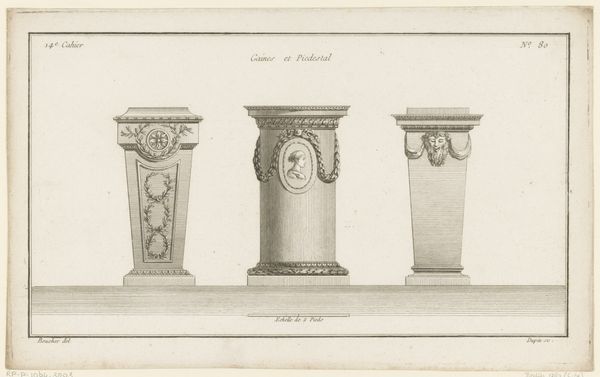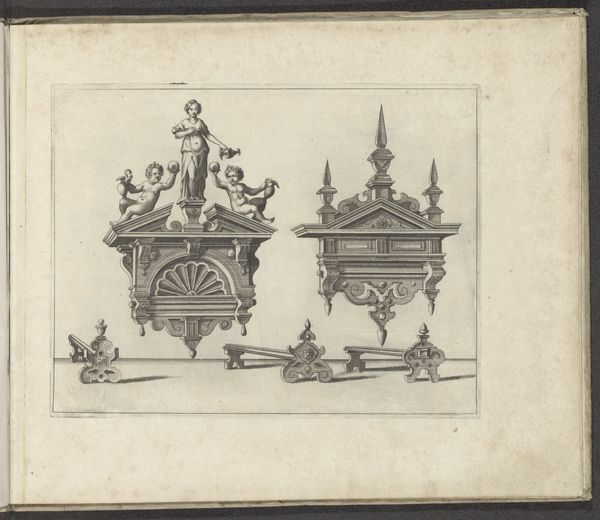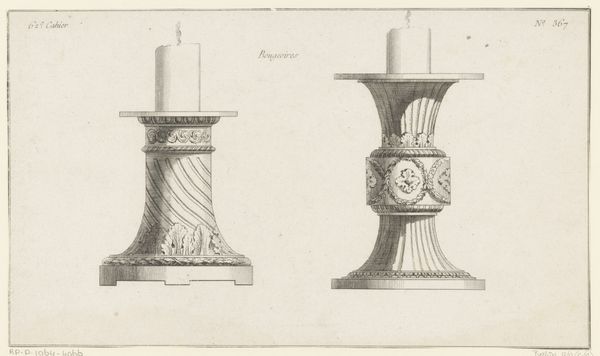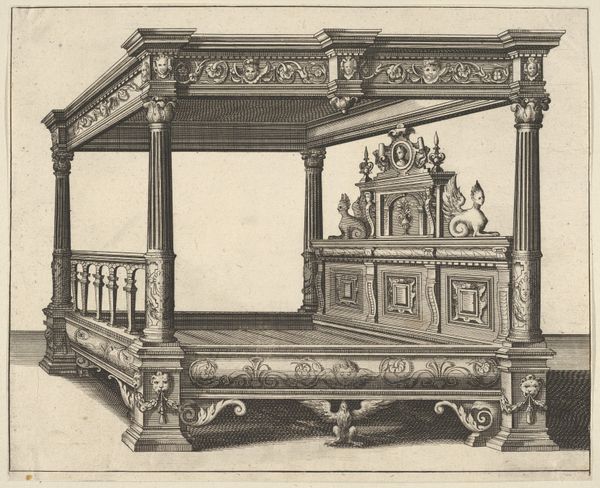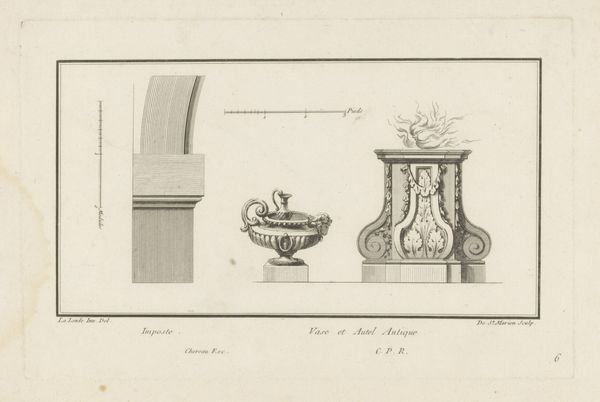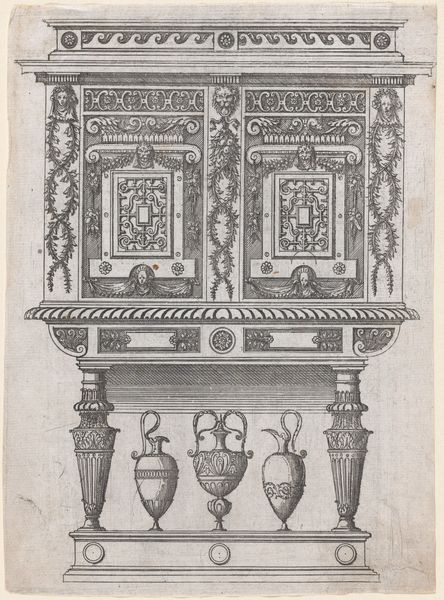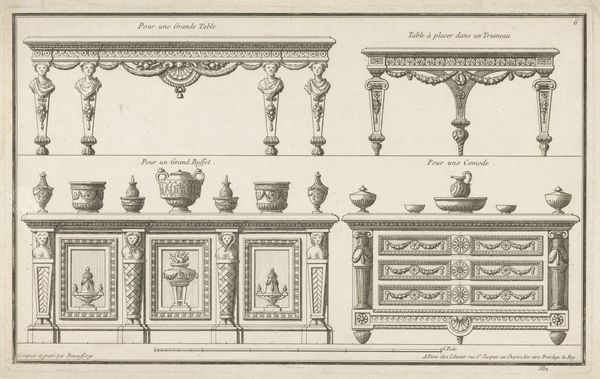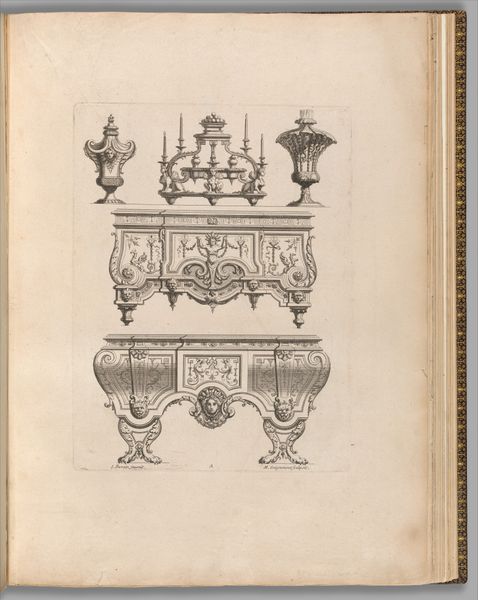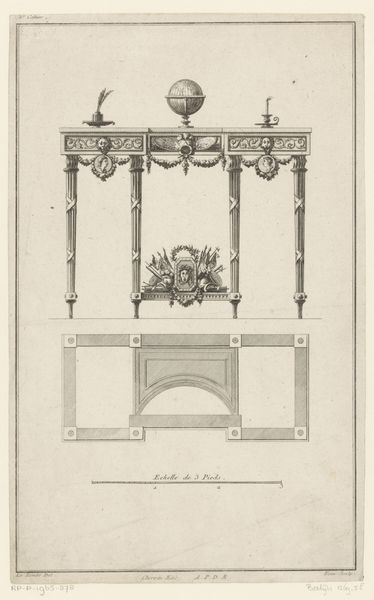
print, engraving
#
neoclacissism
# print
#
old engraving style
#
decorative-art
#
engraving
Dimensions: height 148 mm, width 239 mm
Copyright: Rijks Museum: Open Domain
Editor: This engraving, called "Oliestel," dates from after 1784 and is housed in the Rijksmuseum. The symmetrical design, with those prominent vases, feels very formal, almost staged. What do you see in this piece? Curator: I see a reflection of the Neoclassical obsession with order, symmetry, and, importantly, function, viewed through the lens of societal power. Consider how decorative arts like this weren't just aesthetic objects; they were tools used to express and reinforce social hierarchy. The 'Oliestel,' presumably used for oil and vinegar, elevates a mundane act to a ritual, reinforcing the performative nature of class. Who might have used an object like this, and what kind of messages did it convey to their guests, their community? Editor: So it's less about the beauty of the object itself, and more about what it represents within its social context? Curator: Precisely. Think about the visual language at play. The classical motifs – the urn shapes, the geometric patterns, the idealized faces. Neoclassicism was, in many ways, a conscious return to the aesthetic values of ancient Greece and Rome, cultures that were perceived as the pinnacle of civilization by the European elite. This reference wasn't innocent; it was a way of claiming a lineage, of aligning oneself with power and intellectual authority. Editor: That's fascinating. It makes me think about who had access to those classical ideals and who was excluded. Curator: Exactly! Who benefitted from this “civilized” image, and whose voices were silenced in its creation? Reflecting on art as a symbol of both cultural sophistication and political statements is something I hadn't considered before. Editor: I hadn't either! Thank you for illuminating that aspect of the work for me.
Comments
No comments
Be the first to comment and join the conversation on the ultimate creative platform.
